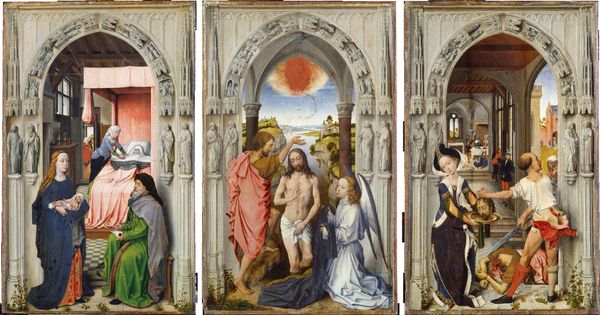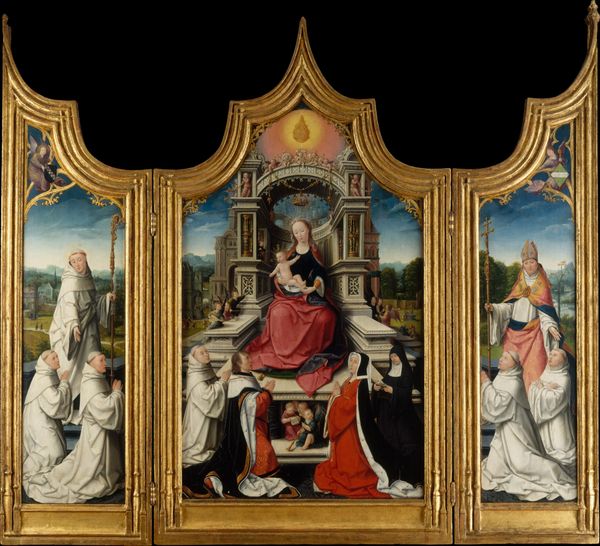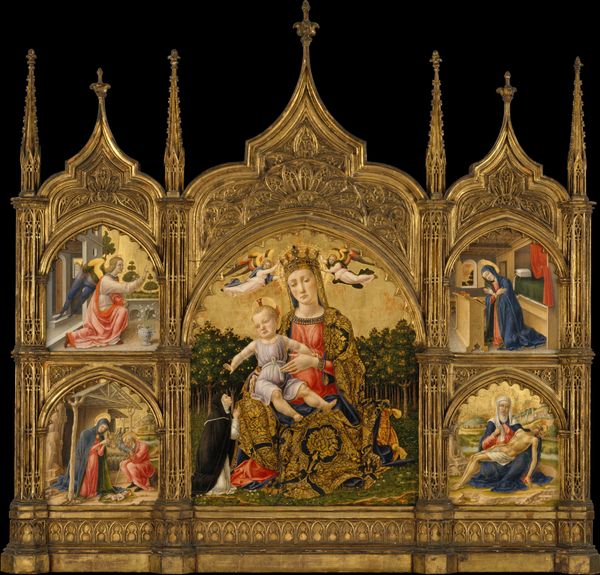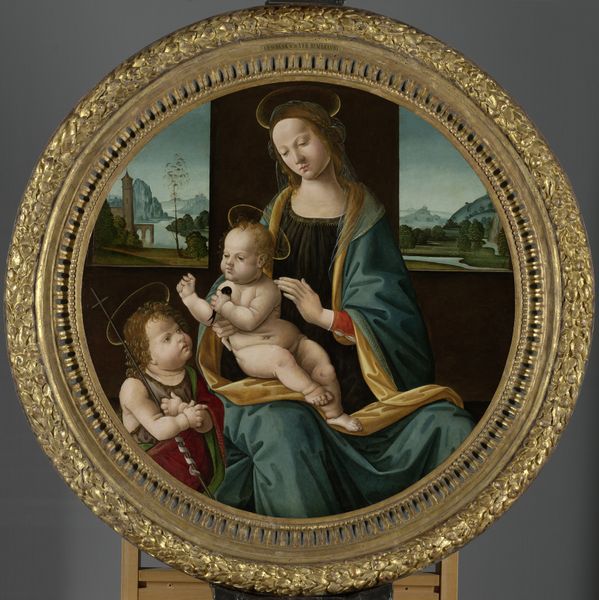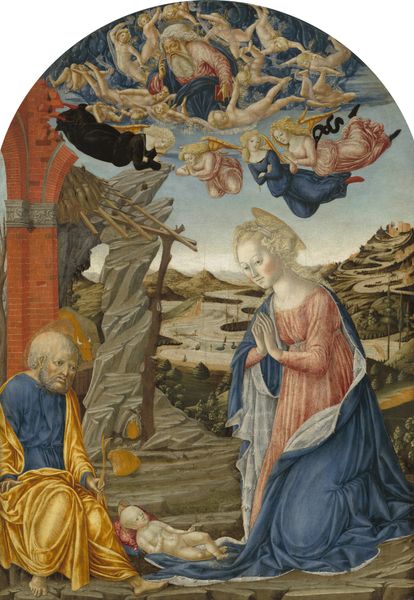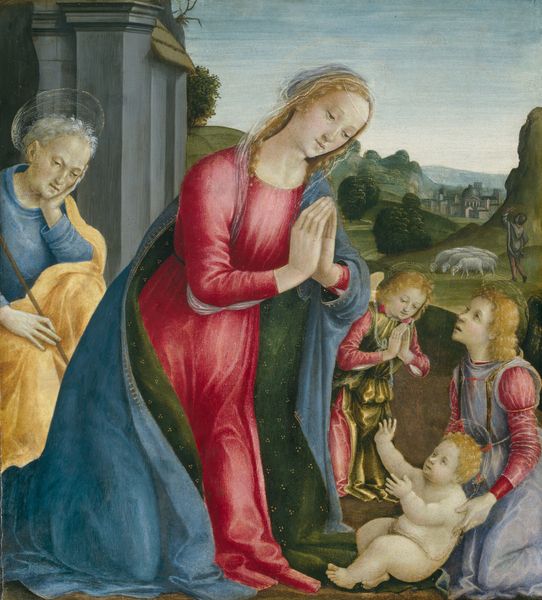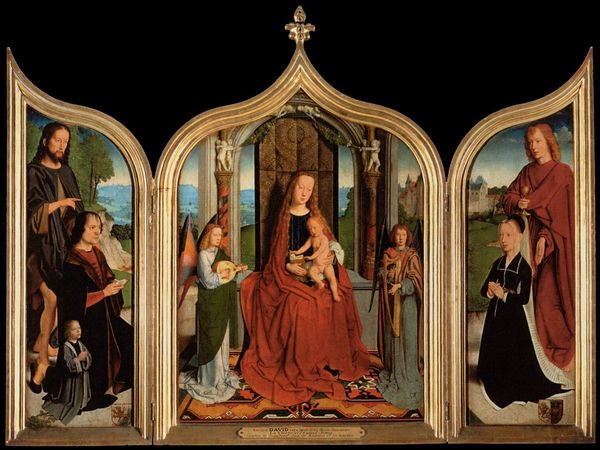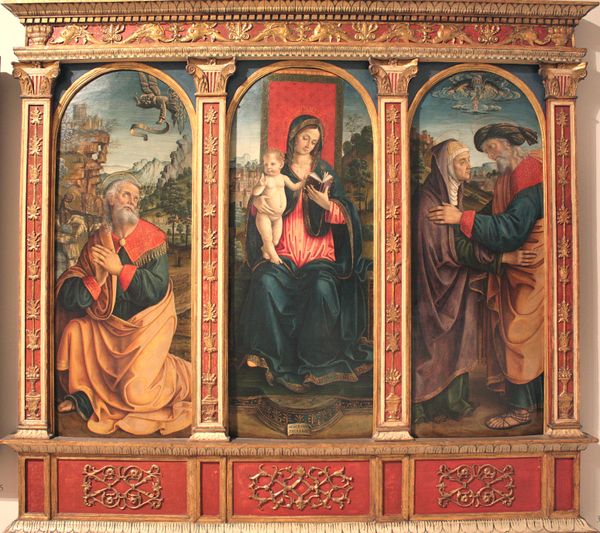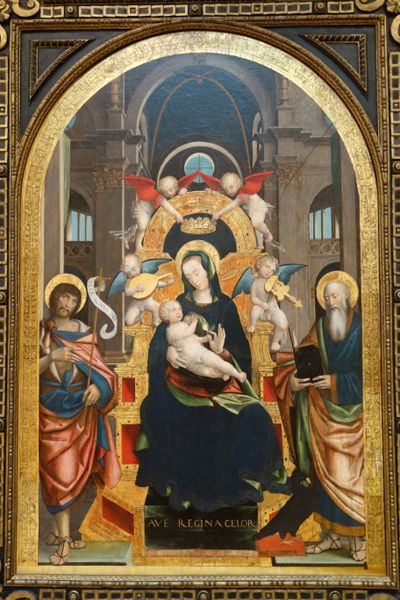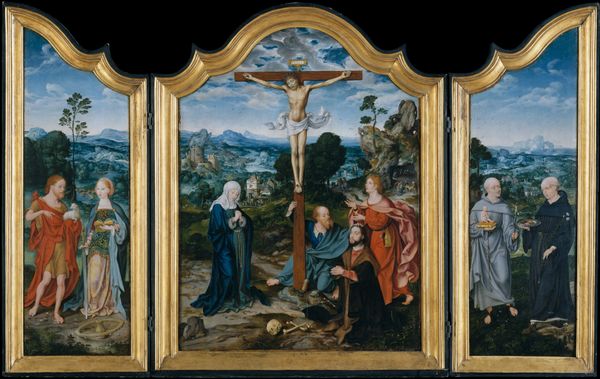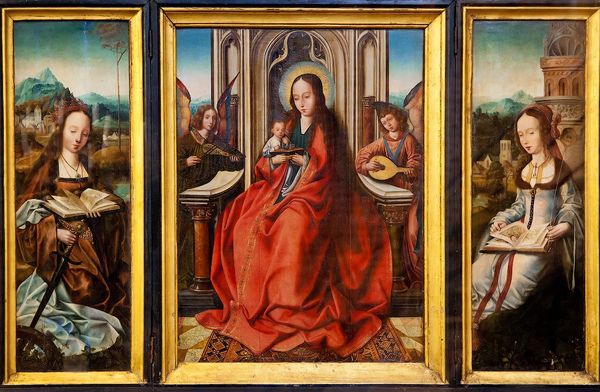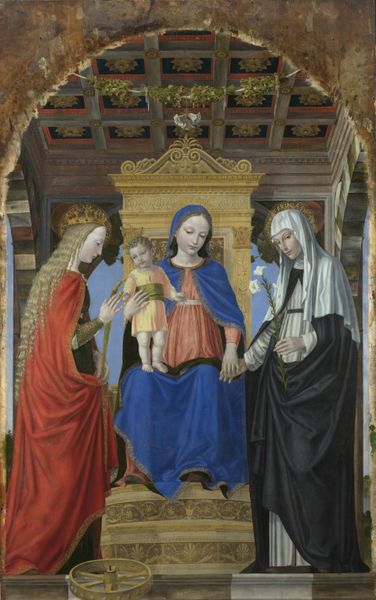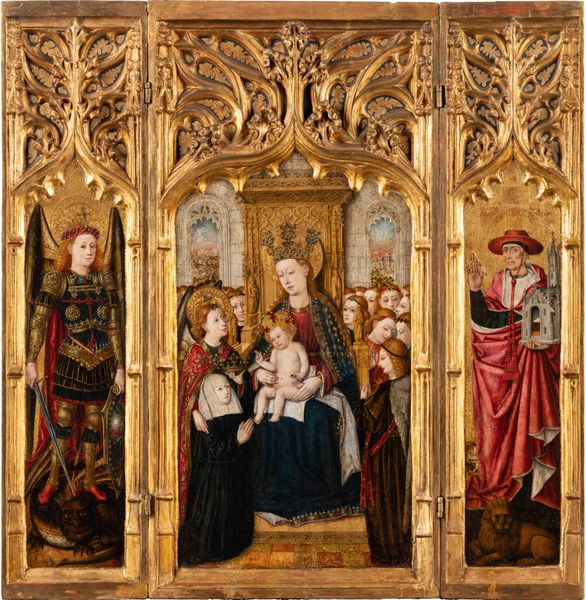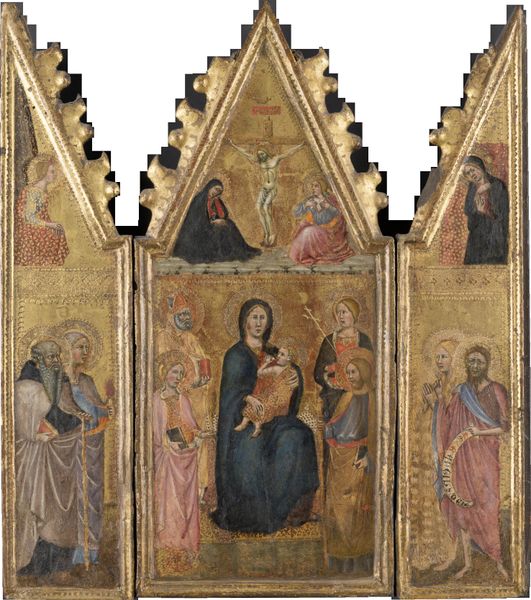
tempera, painting
#
portrait
#
narrative-art
#
tempera
#
painting
#
figuration
#
italian-renaissance
#
early-renaissance
#
portrait art
Copyright: Public domain
Curator: I am struck by the delicate composition and ethereal quality of this triptych; the Madonna at the center seems so poised yet intimate. Editor: Yes, Albertinelli’s "Triptych," created around 1510 in tempera, does possess a remarkable harmony. But I find myself particularly interested in the role such a piece played in Florentine society. These devotional objects were often commissioned for private chapels within affluent households. What statements, therefore, were families making with these displays of religious art? Curator: Undoubtedly, they were expressions of piety and wealth. Looking closer at Saint Catherine on the right panel—the figure standing triumphantly over what appears to be a prostrate figure—one wonders how the politics of imagery are deployed. How did such portrayals intersect with contemporary notions of feminine power, agency, and martyrdom? The Madonna, of course, holds immense cultural power. Editor: The visual language employed serves religious doctrine, reflecting contemporary cultural values about gendered behaviour within these households. Early Renaissance artists increasingly drew wealthy elites into sacred visual dramas. The figures attending upon Madonna, like in this triptych, were more commonly set in detailed Italianate architectural or garden settings. This aesthetic likely mirrored commissioners’ houses, therefore associating its owner and family directly to images of Christian holiness and moral behavior. Curator: I completely agree. The way Mariotto Albertinelli synthesizes these sacred figures with the surrounding world complicates our understanding of faith during the High Renaissance. While he presents familiar stories, his compositions subtly remind the viewers of existing power relations, perhaps revealing uncomfortable dynamics within Florentine society and belief systems. Editor: Absolutely. Works like these provided moralistic and socially acceptable routes for patrons to advertise wealth and position their families and names within an established ethical system, therefore giving additional status. Curator: Thank you for providing critical historical background. These devotional pieces contain remarkable intricacies, revealing the socio-cultural history from the Renaissance. Editor: My pleasure. And thank you for drawing attention to those gendered socio-political implications behind each painted detail. These works give visual form to long, multifaceted cultural discourses.
Comments
No comments
Be the first to comment and join the conversation on the ultimate creative platform.
